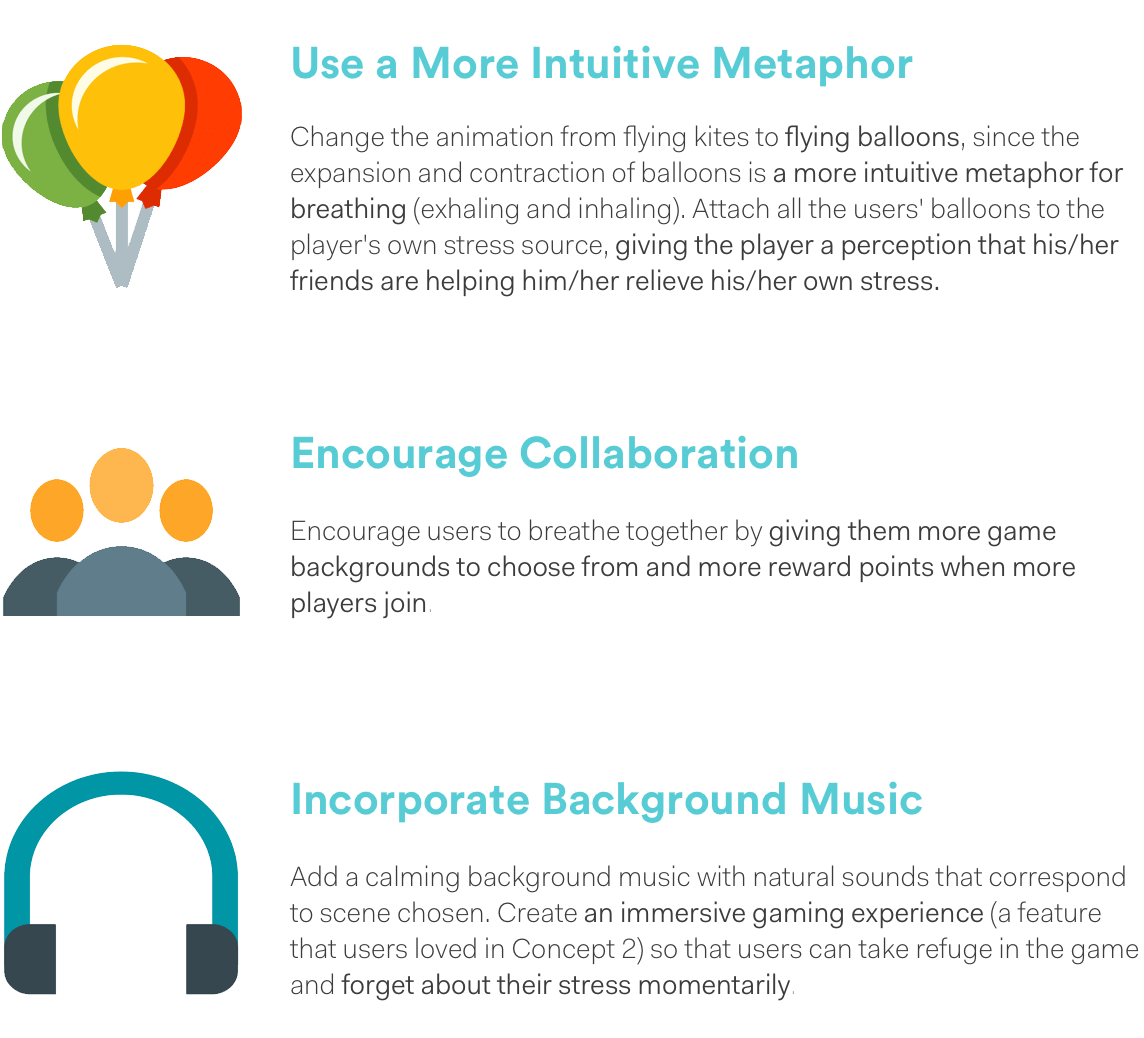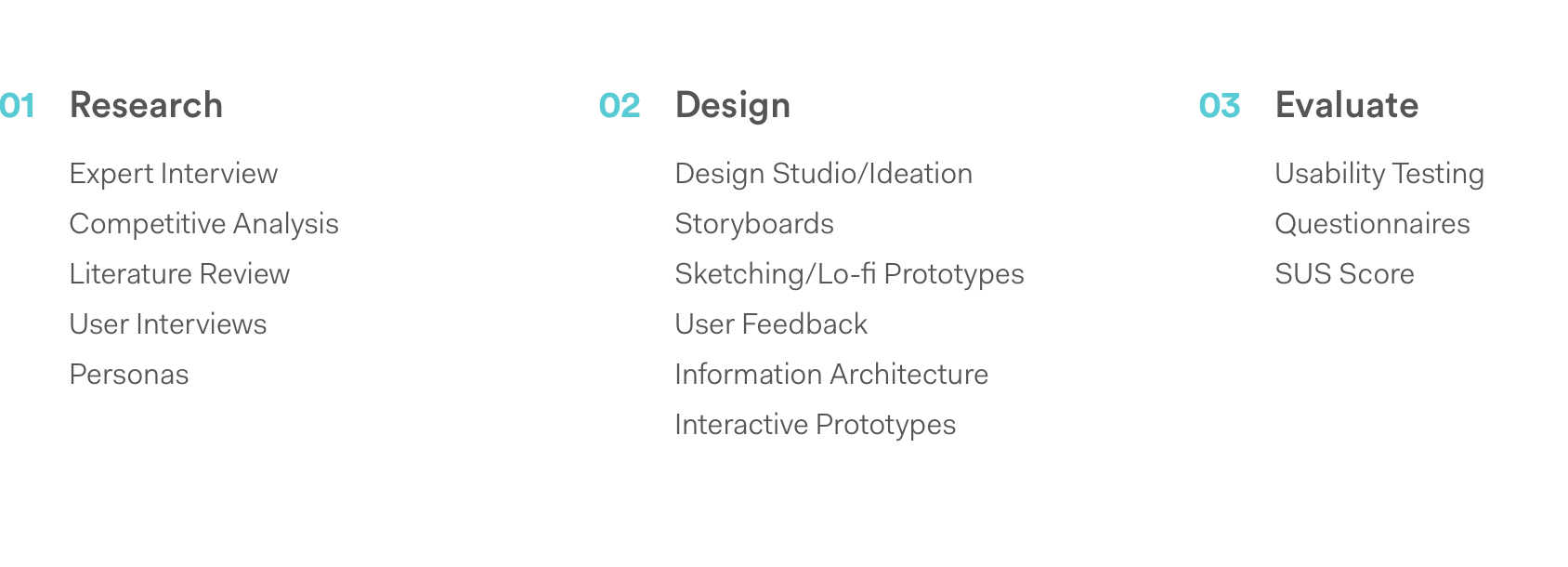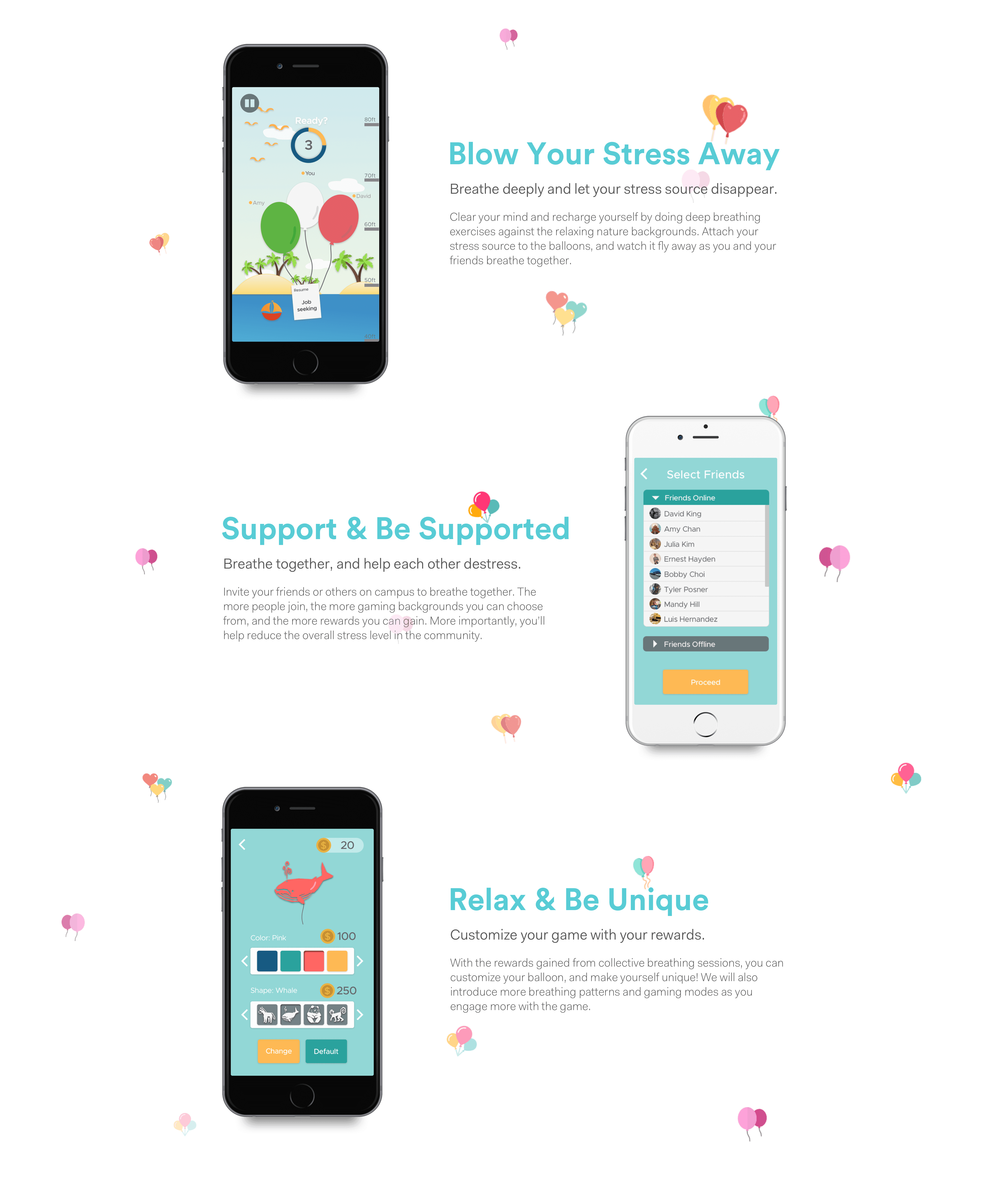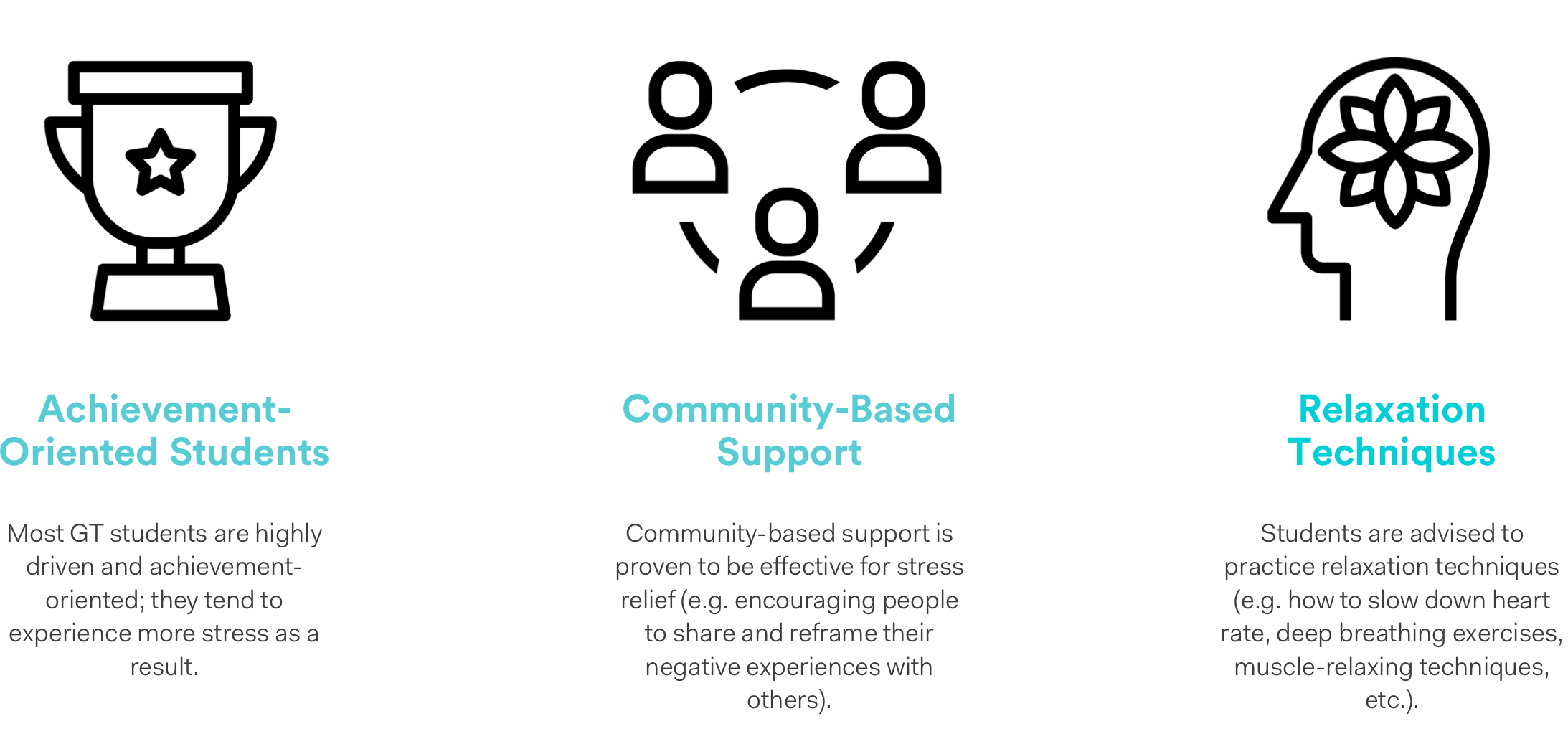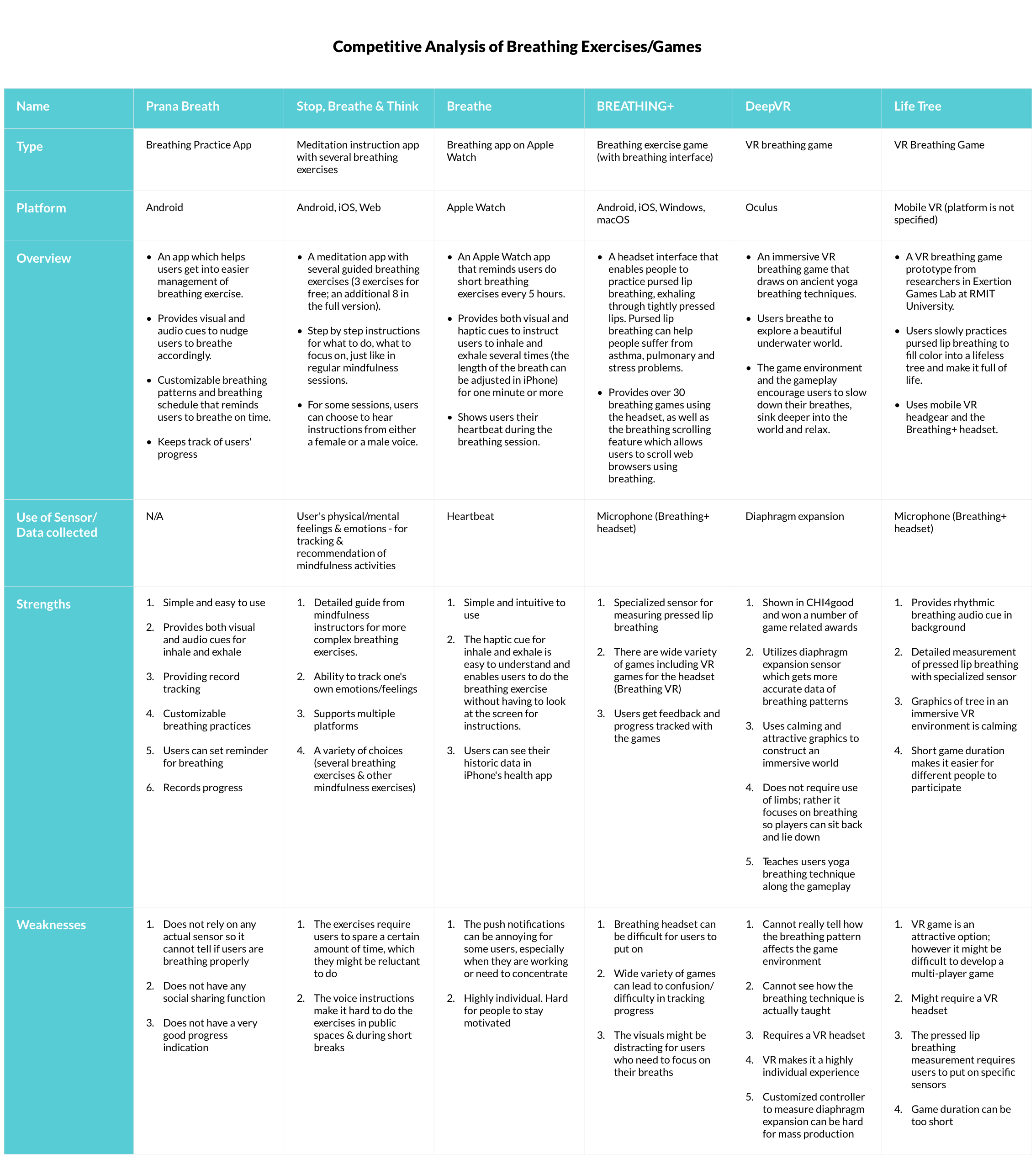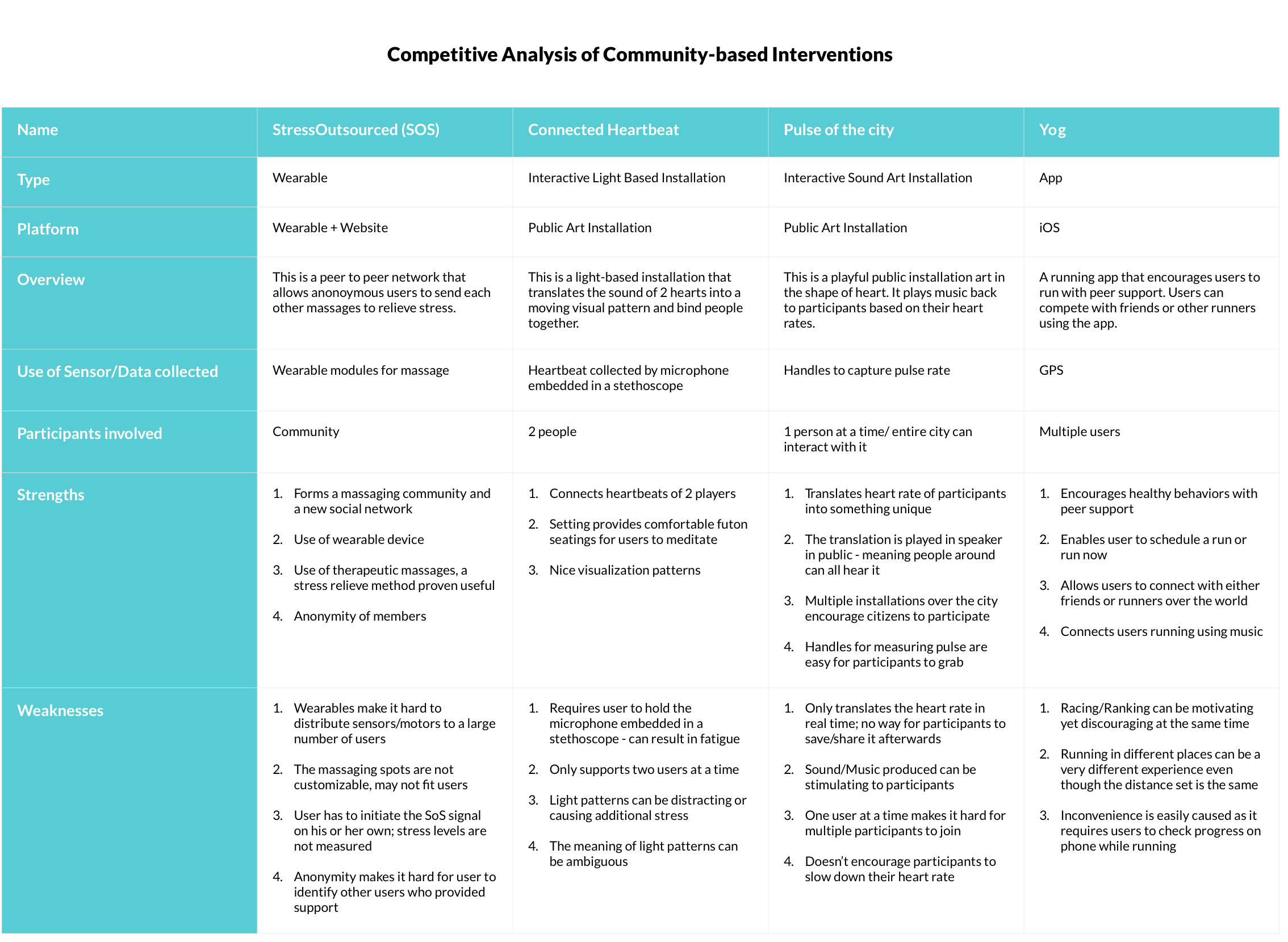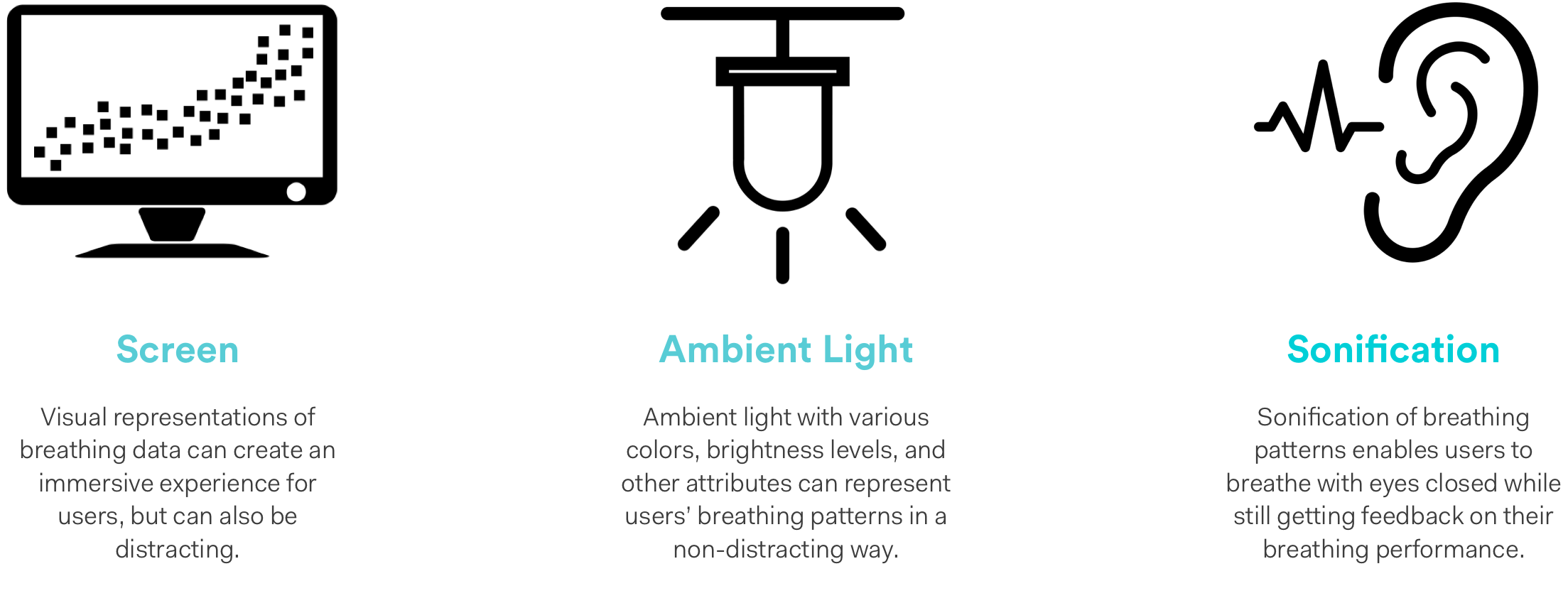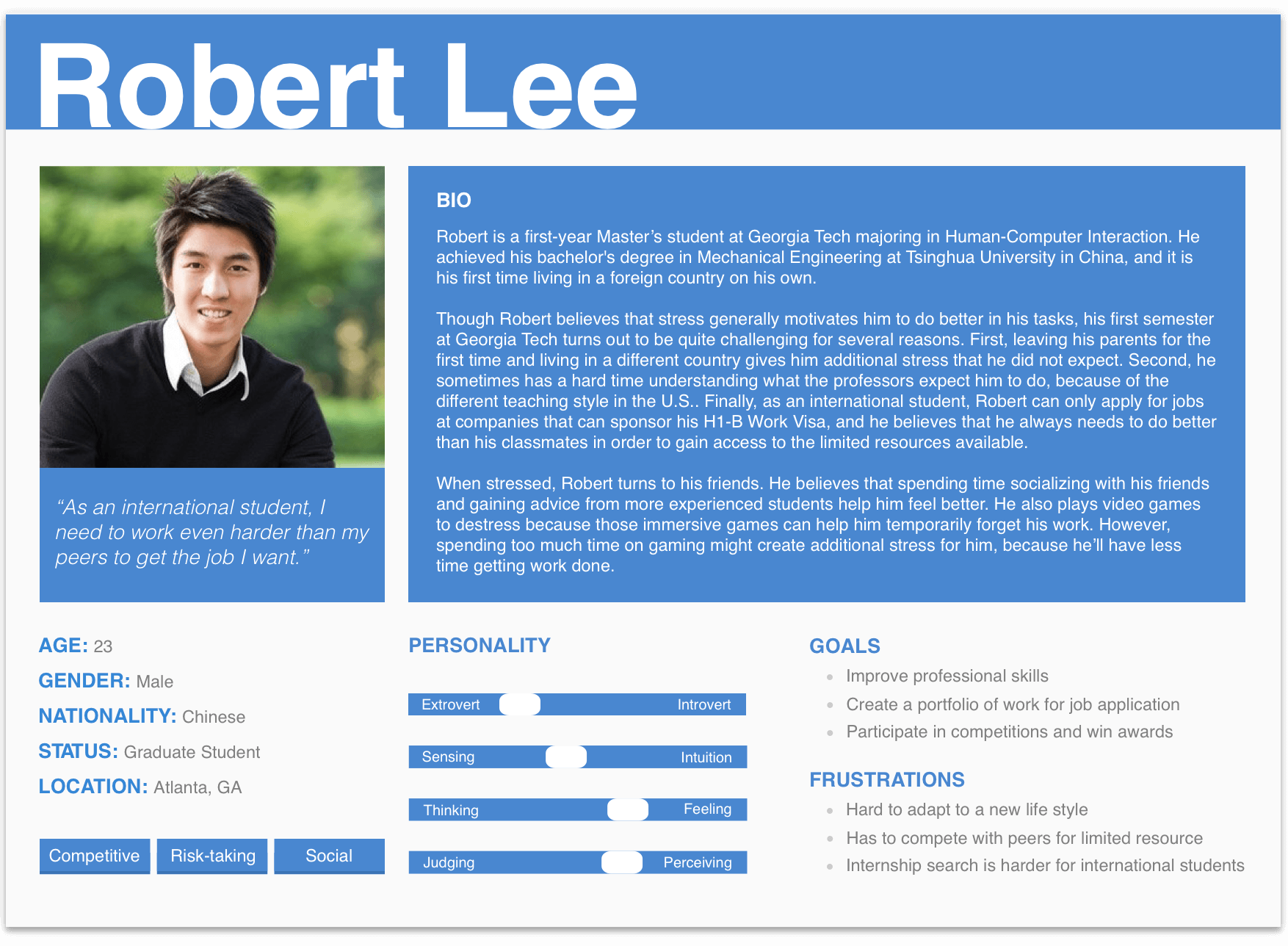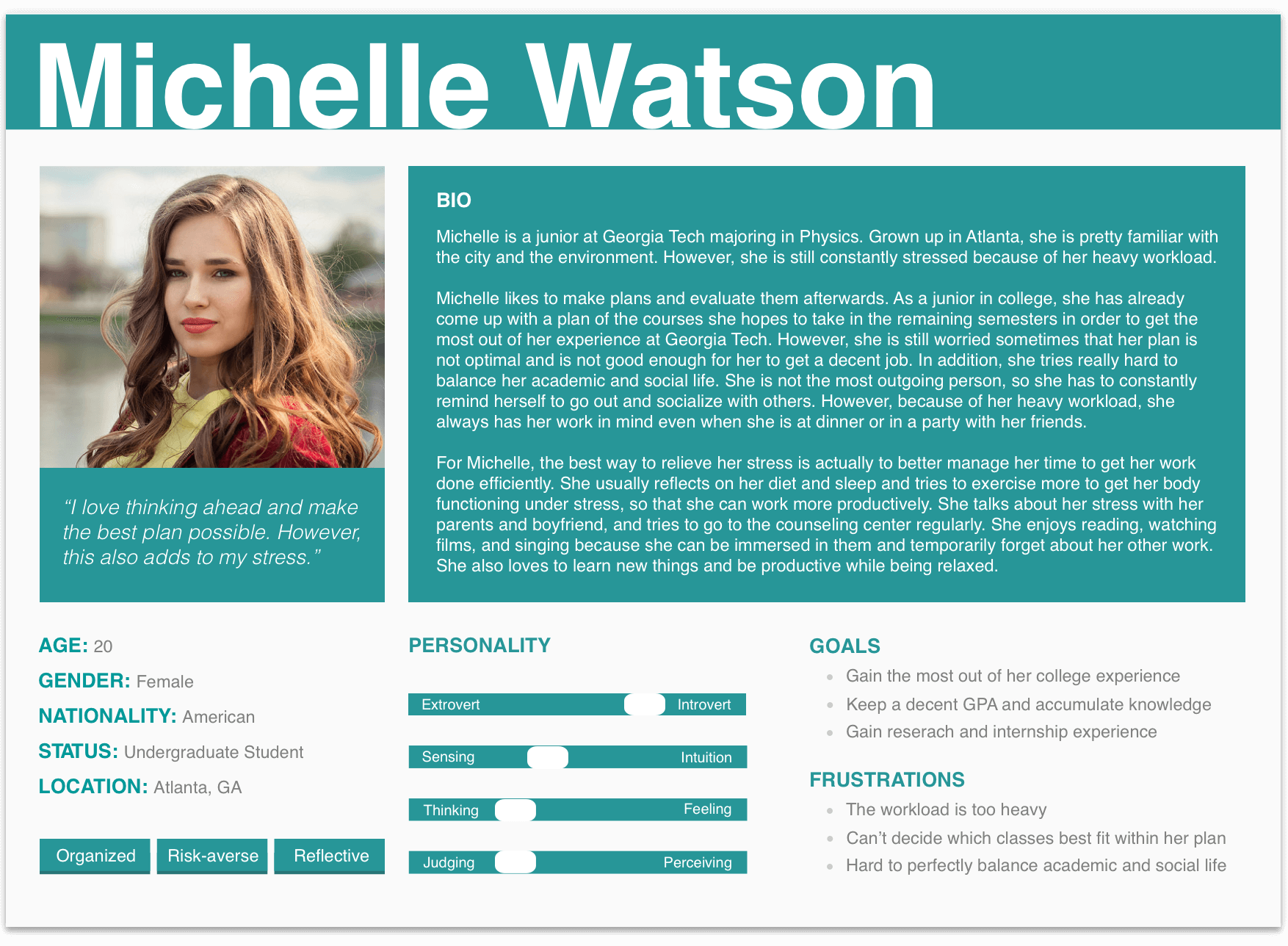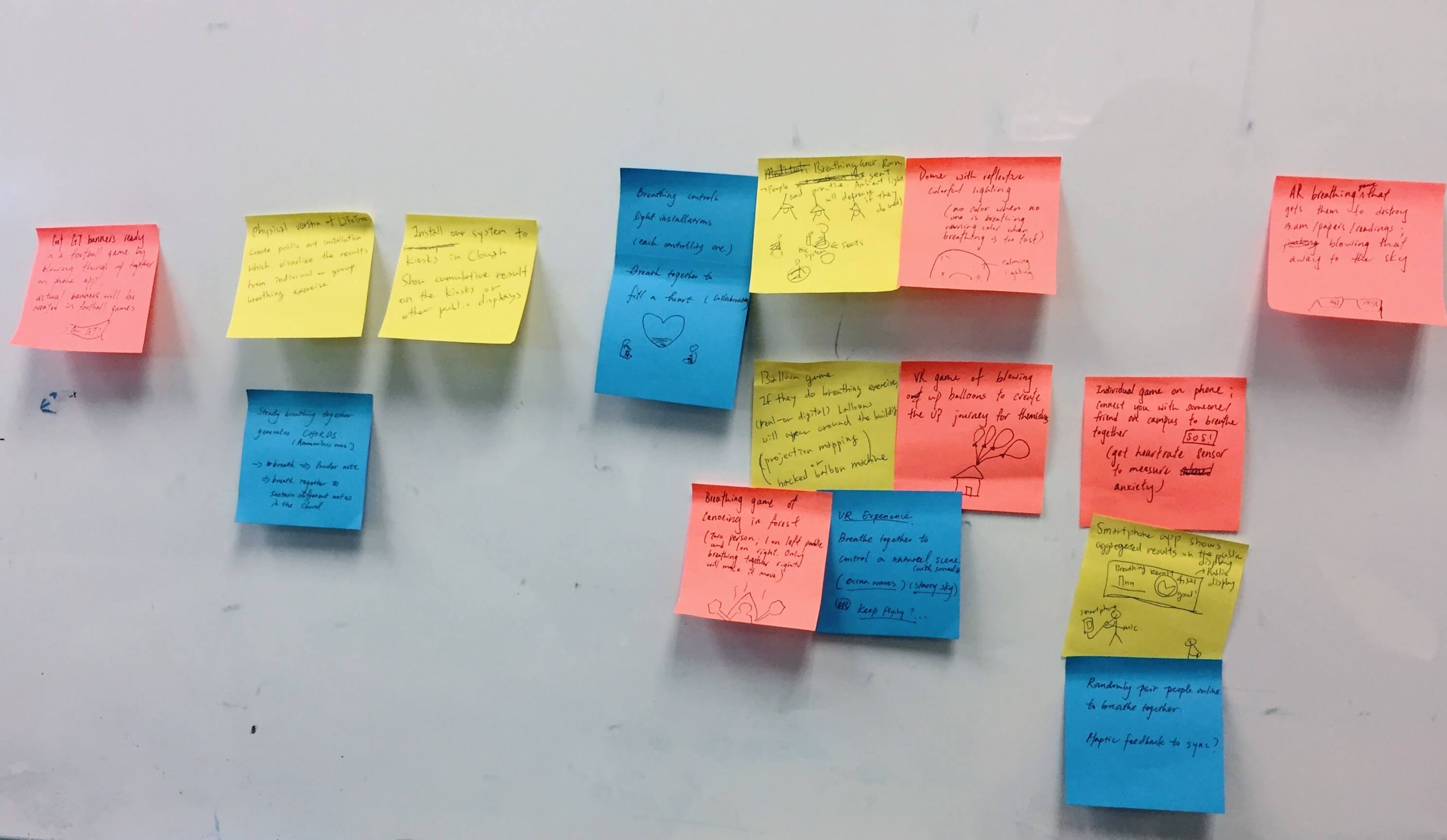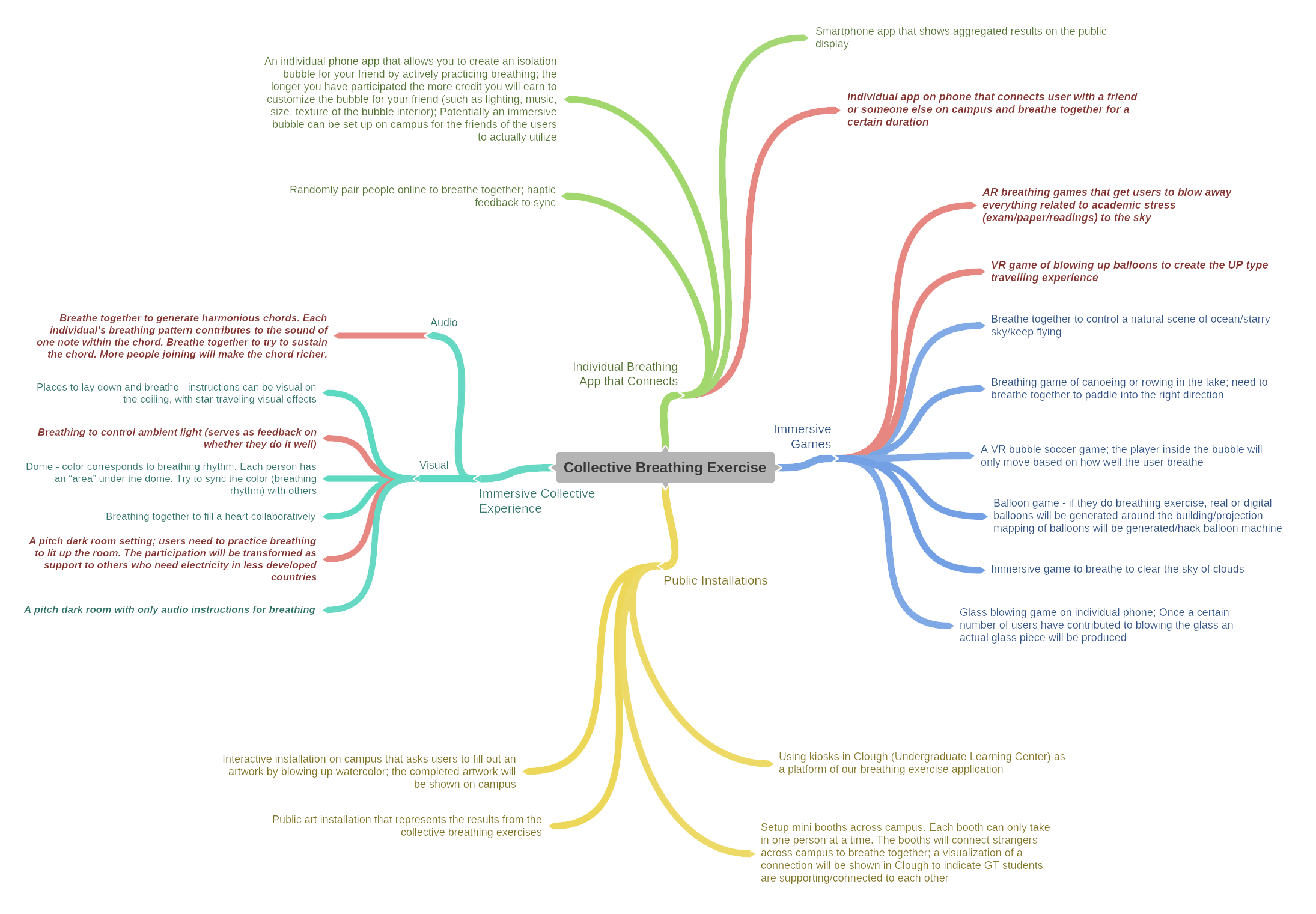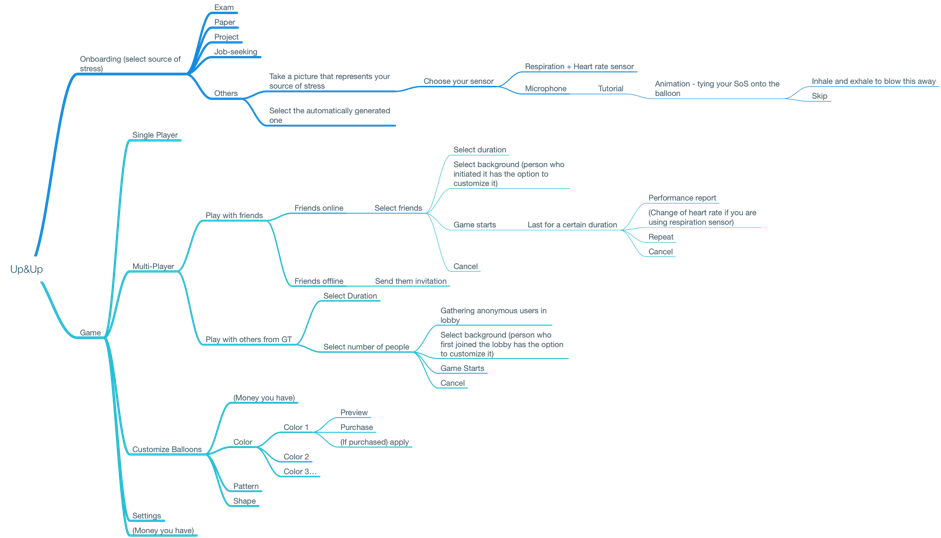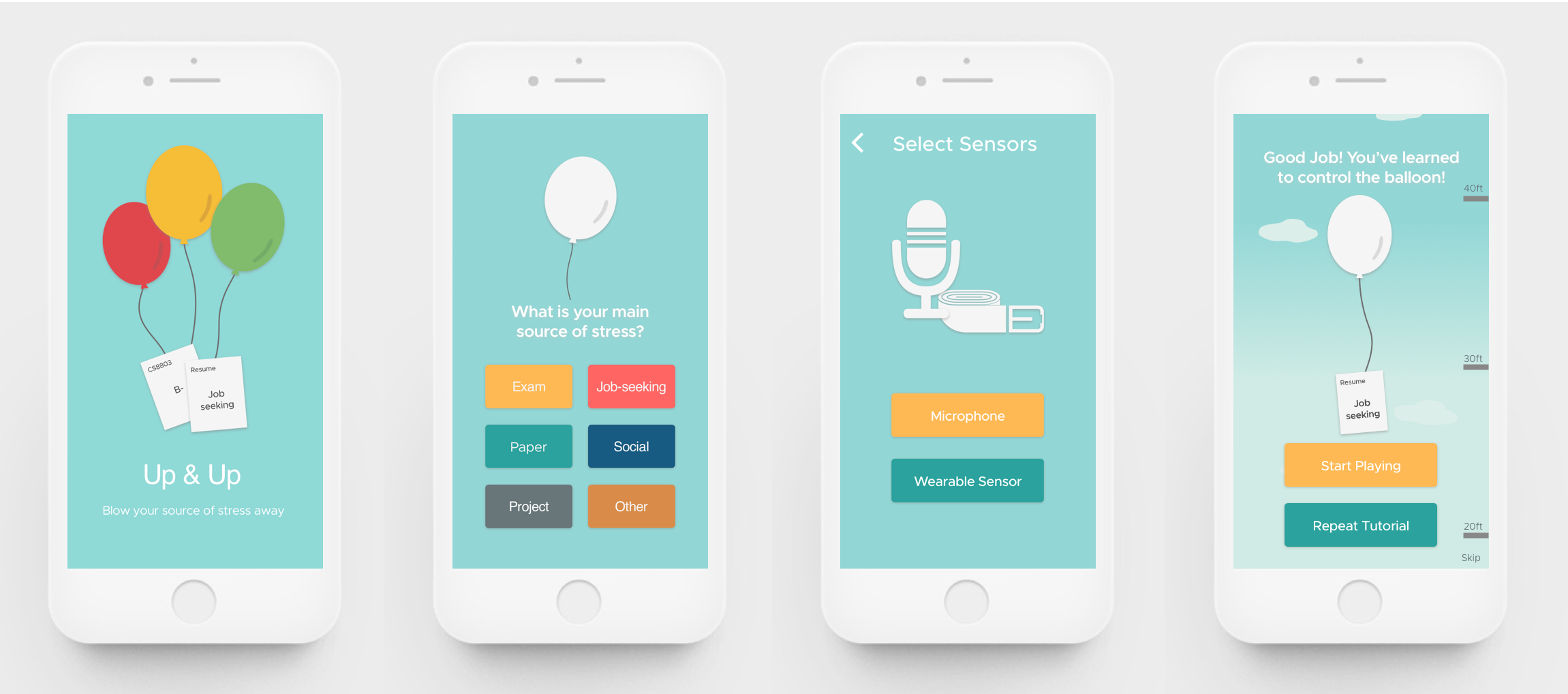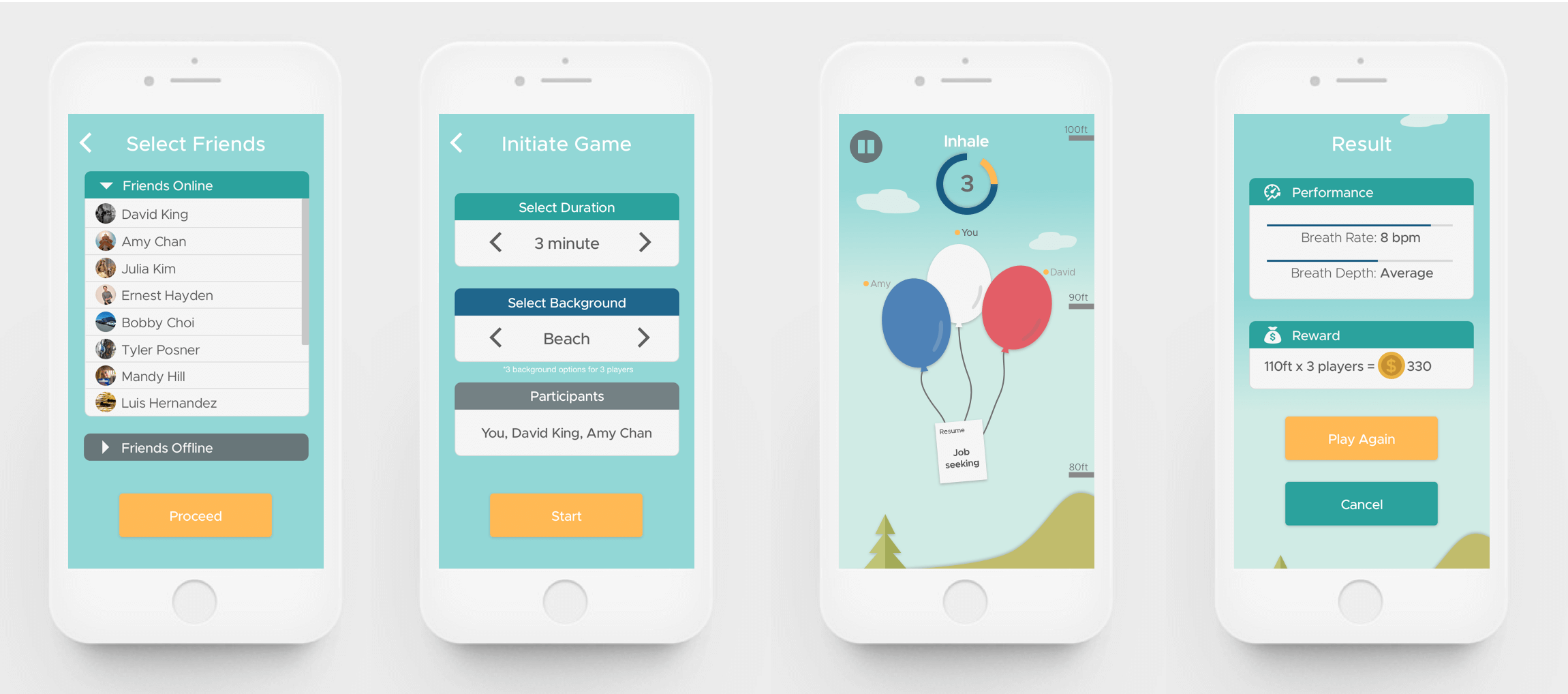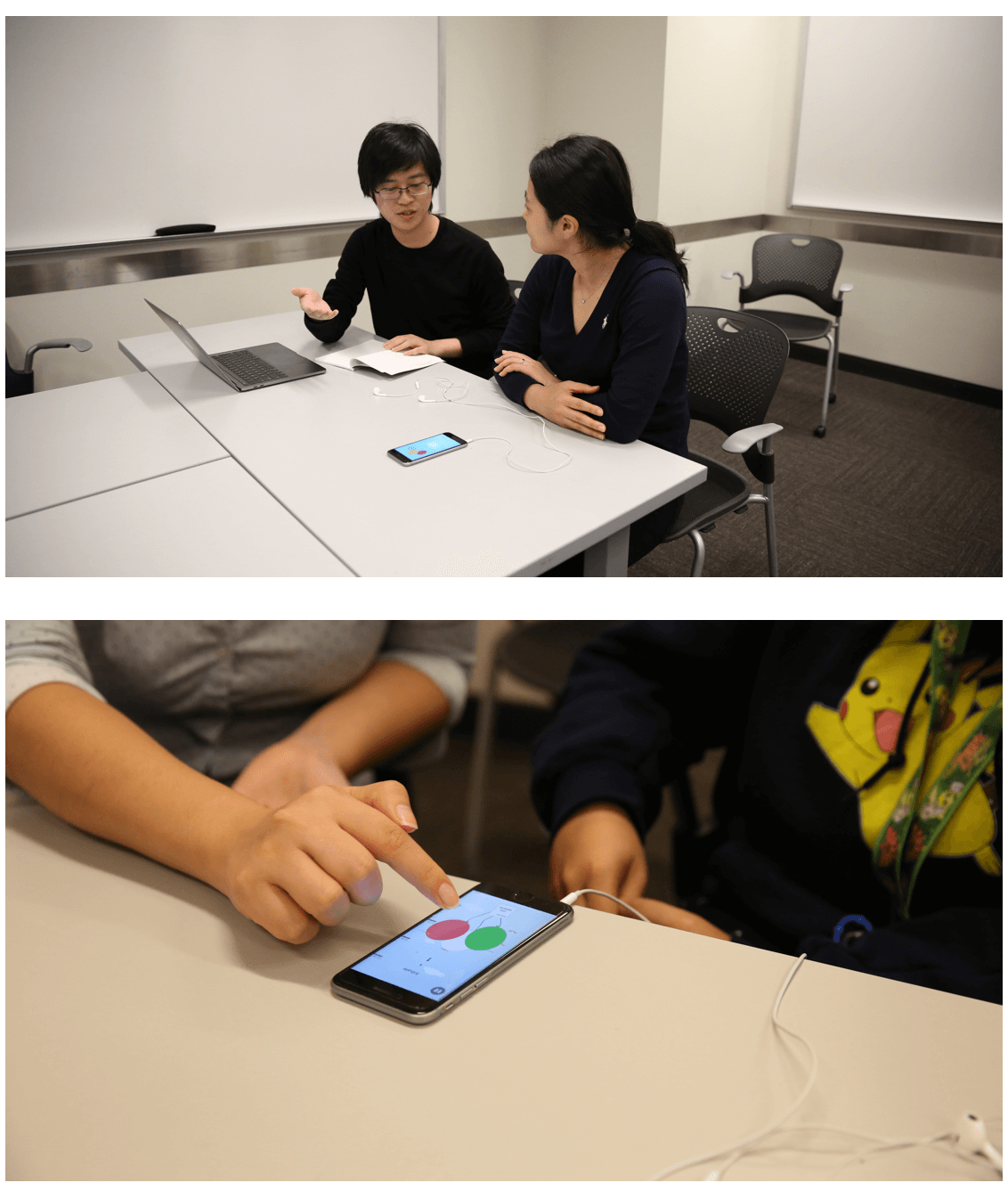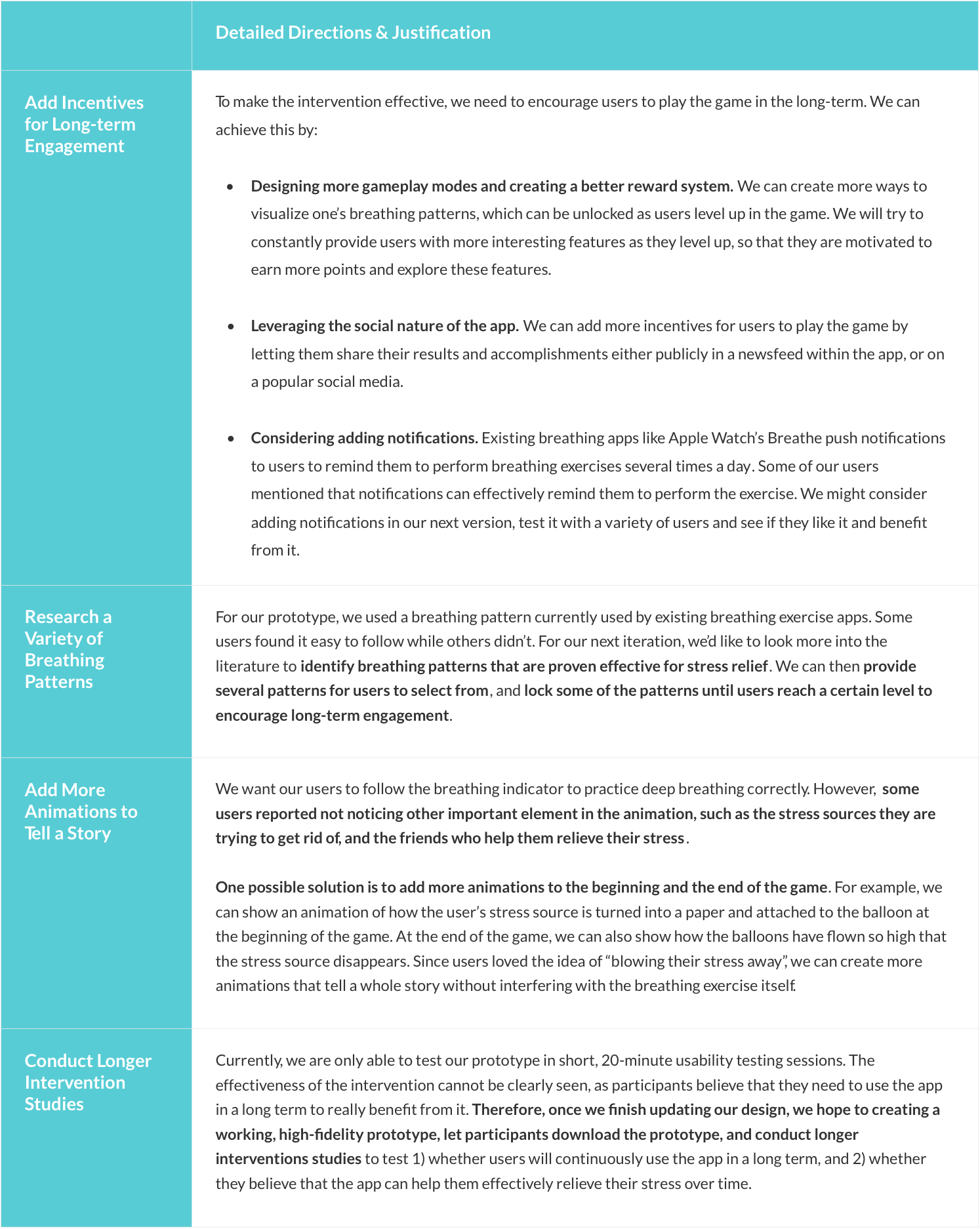Design Alternatives
Based on our user research data, we reviewed our ideas based on a few key criteria including:
- Creativity: whether the idea is interesting/immersive enough to motivate students to perform the exercise
- Effectiveness: whether the solution can effectively bring the community together and help reduce students' stress
- Convenience: whether students can take a break to breathe when and where they need it
We then came up with low-fidelity prototypes for our top three concepts.
Concept 1
Concept 1 is a collective breathing exercise app that enables users to breathe with their friends or other students on campus. The purpose of this app is to teach users breathing techniques which can help relieve their stress, and to enhance a sense of togetherness by letting them breathe in similar rates/patterns with others. For this idea, users may be able to choose a belt type sensor or a microphone to measure their breathing patterns (in their smartphones). Click to view the low-fidelity interactive wireframe.
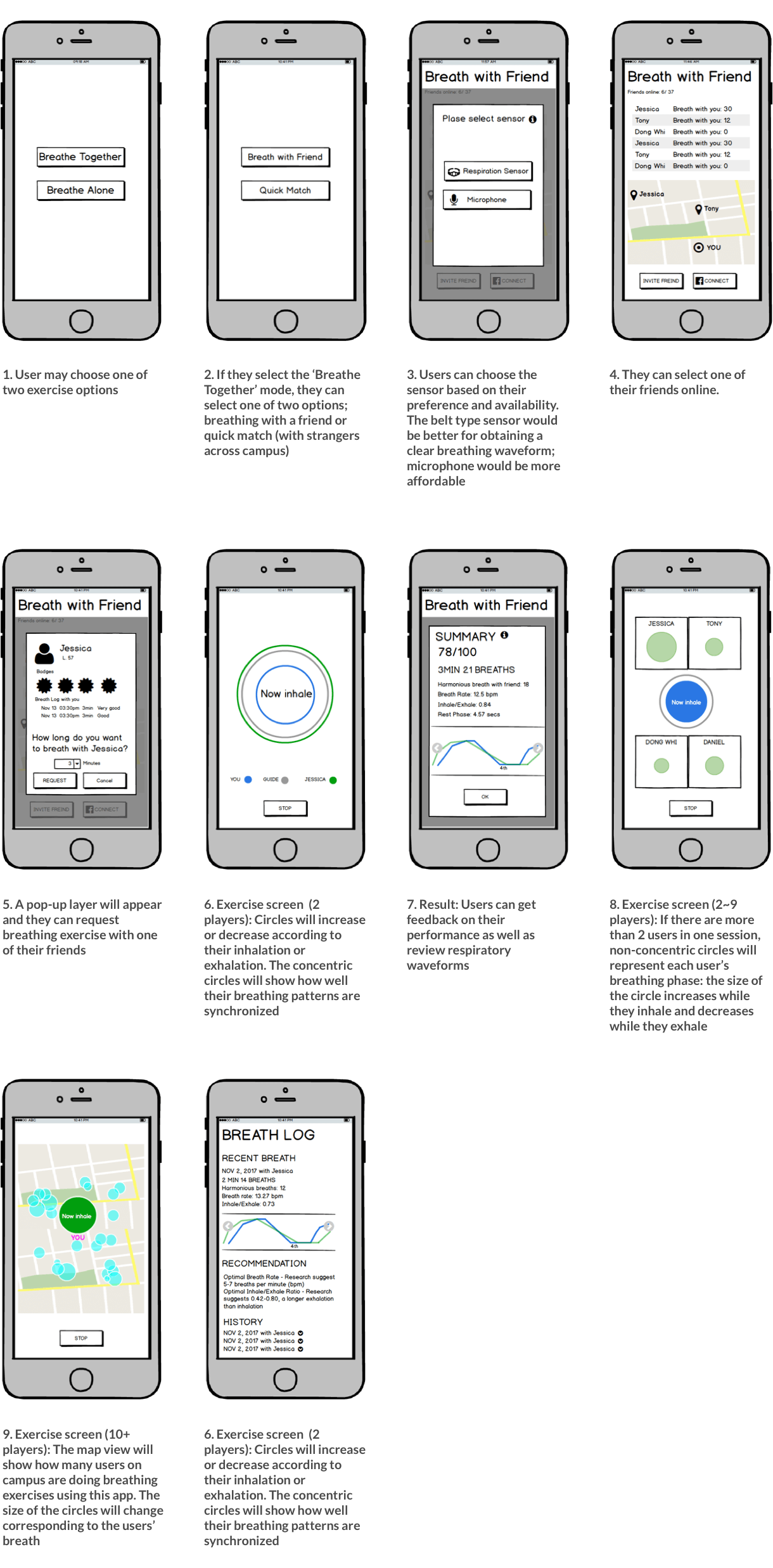
Concept 2
This is a collective, immersive experience that aims to let people (20 max) breathe together in a relaxing environment. Students are able to enter a pitch dark room and sit on futons, which have pressure sensors and can recognize when a student is sitting on it. After students put on their breathing sensor (belt) around their torso, they will be able to see their breaths visualized in wave form on a large display screen, which is mostly dark except for the breathing patterns.
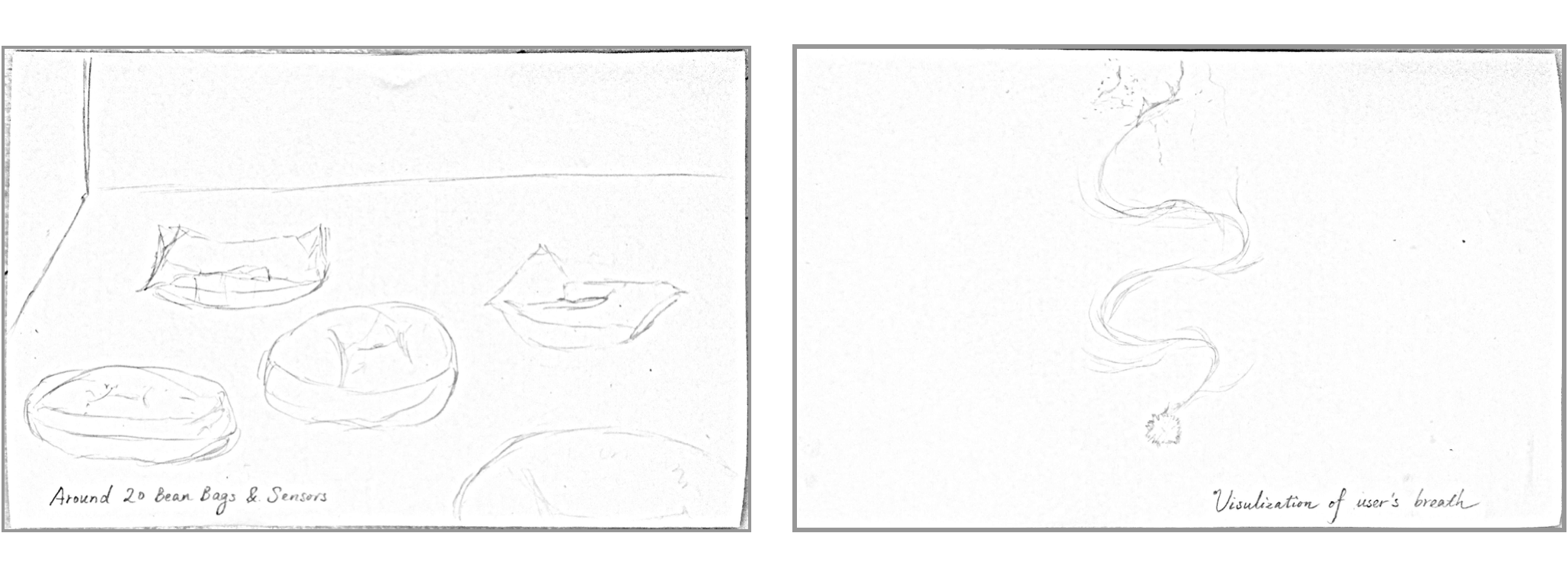
Students will hear relaxing sounds of ocean waves that serve as an audio cue to let them know when they should inhale and exhale. In addition, there will hear a soothing background music, which is composed of a progression of simple music chords. The chords will become richer and richer as more people sit down and start to breathe; each person will contribute to part of the chord, so that the experience becomes even more immersive and relaxing as more people join.
In addition, we also hope to make this experience part of a fundraising process. We will let students know that when they breathe inside, they will be able to raise money for those in need of electricity. When they come out, they can see what they’ve contributed by breathing and relaxing themselves, which will motivate them to return and breathe more in the future.
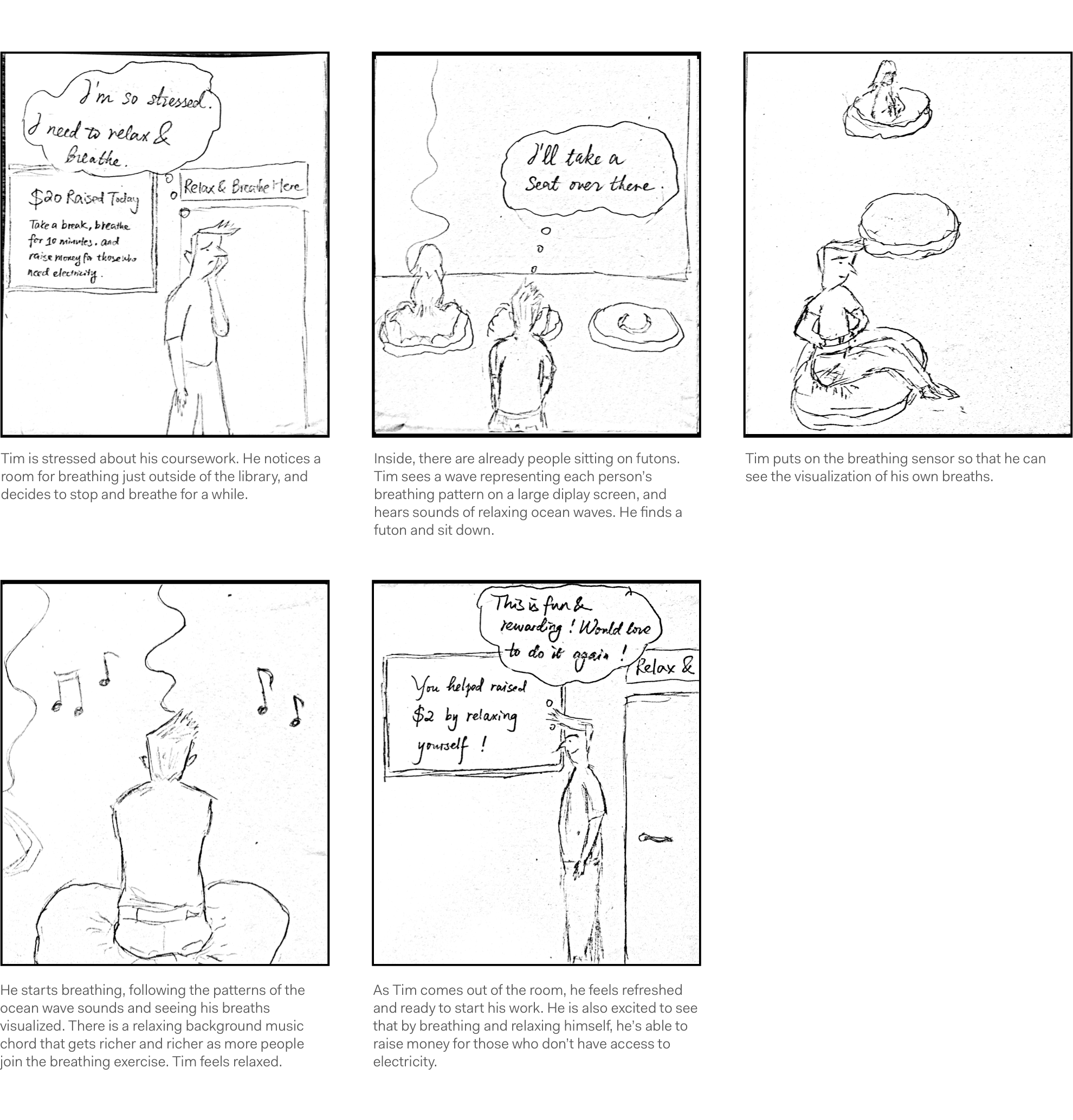
Concept 3
Our third concept is a mobile breathing game. Users are able to turn their sources of stress into a kite, and then breathe to fly the kite and "blow their stress away." They can play the game with friends they know, or anonymous players on campus, using either a belt sensor or a microphone as input. After successfully completing each breathing session, users are rewarded with points based on their breathing quality, and can use the points to customize their kites. Click to view the low-fidelity interactive wireframe.

User Feedback
We presented our 3 ideas to potential users at Georgia Tech and gathered both qualitative and quantitative feedback. For Concept 1 and 3, we let users interact with our interactive wireframes; for Concept 2, we walked users through our storyboard, played them a sample background music , and presented them with a sample visualization video so that they can get a feel of the immersive environment (we let them know that we will create our own visualization with similar colors but more relaxing patterns if we choose concept 2 as our final concept). Users were encouraged to think aloud during the process.
After presenting each idea, we asked users to rate how frequently they'd use the solution, how effective they think it would be, and how likely they would recommend the solution to a friend. We also asked their favorite/least favorite part of each solution, and let them compare the three solutions. We created an affinity diagram based on the qualitative results we got.
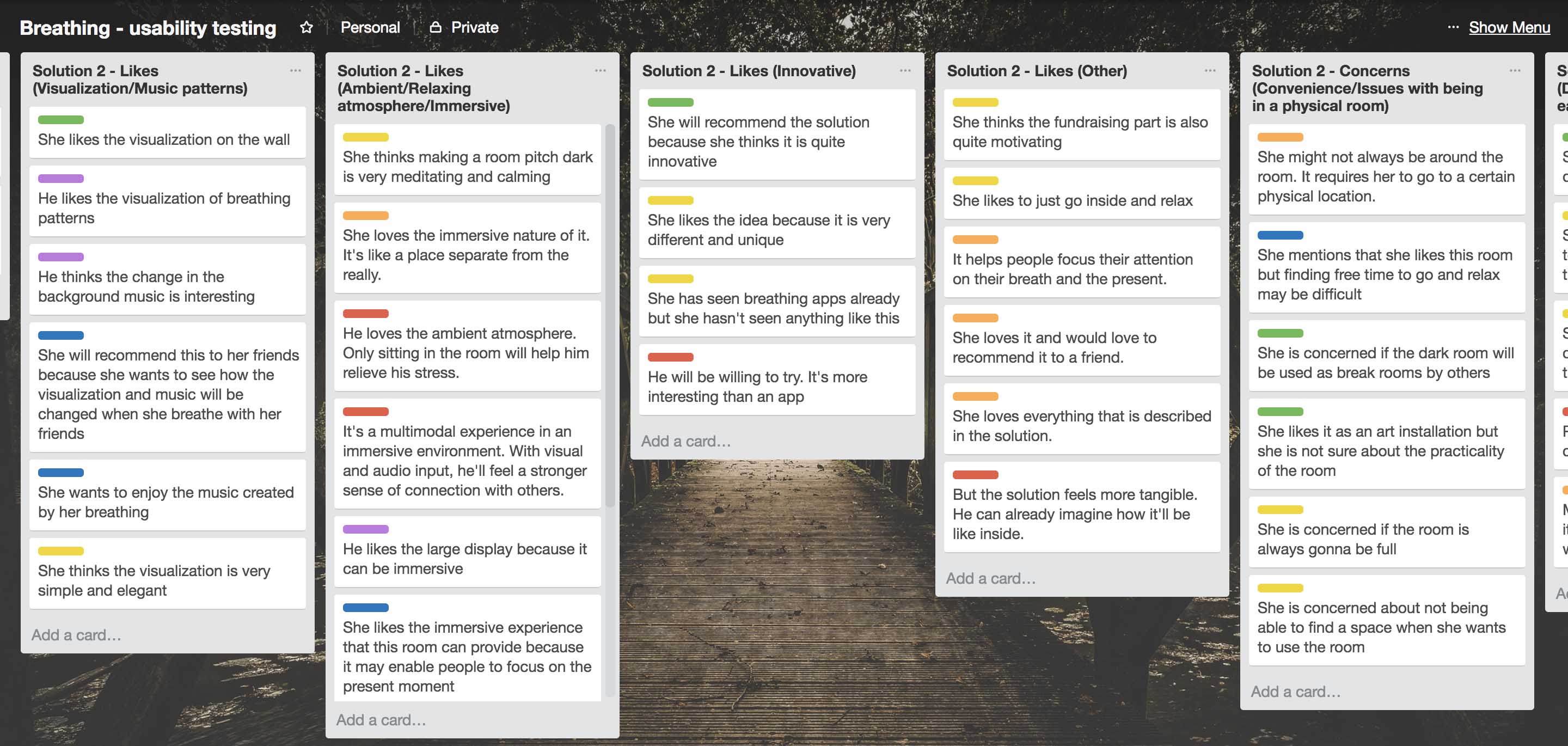
Users unanimously preferred Concept 2 and 3 over Concept 1. Some mentioned that Concept 1 is similar to Concept 3, but the latter is more engaging because of the gamification factor. Therefore, we focused our analysis on comparing Concept 2 and Concept 3. The user feedback is summarized below.
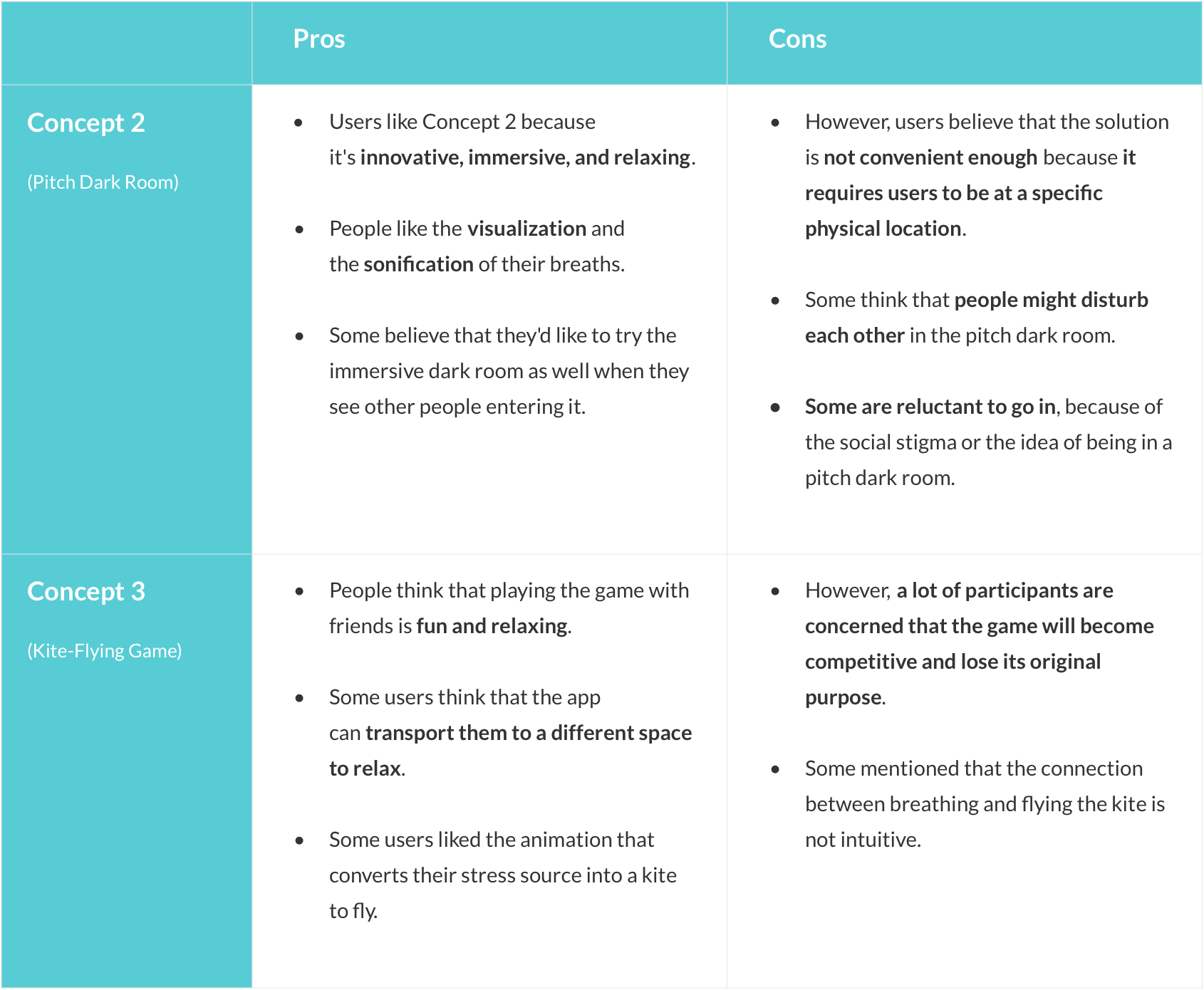
Based on user feedback, we decided to modify and go ahead with Concept 3 (Collective Breathing Game App) because:
- Almost every student owns a smartphone. Having an app on one's phone makes it more convenient to perform breathing exercises when needed.
- The breathing visualization in the game is more concrete than in the pitch-dark room.
- Prototyping and creating a mobile app is more feasible and less expensive, but equally effective based on user feedback; if we created one or several dark rooms for breathing intervention, GT has to provide the space for us.
We also decided to make the following changes to Concept 3 to address some of its drawbacks identified through user feedback:
